

|
Veterans Stadium | |||||||
|
 |
 |
Philadelphia, PA
| Team: Philadelphia Phillies | Opening Day: April 10, 1971 |
| Capacity: 62,382 | Dimensions: Foul Lines 330, Power Alleys 371, CF 408 |
| Surface: Astroturf-8 (1971-2000), NeXturf (2001-) | Architect: Hugh Stubbins & Associates |
| Owner: City of Philadelphia | Cost: $52 million |
| Builder: McCloskey & Co. | Style: concrete doughnut |
| Ground Breaking: October 2, 1967 | Dedication: April 4, 1971 |
| Closing Day: September 28, 2003 | Razed: March 21, 2004 |

Memorable Moments:

This stadium is big. I mean HUGE. I was sitting in the cheap seats and I wasn't sure what sport they were playing. However, I can't understand why Philadelphia is going to level this stadium and build the new Citizen's Bank Park. Granted, this isn't one of the new style of old school retro ballparks, but Citizen's Bank Park will sure look silly in a sea of parking lots, with the only things surrounding it are other sports complexes. I don't think Veteran's Stadium is a great facility, but it fits in the area where it was built and I'm sure Philadelphia could have spent the money they are spending on the new ballpark on other projects around the city.
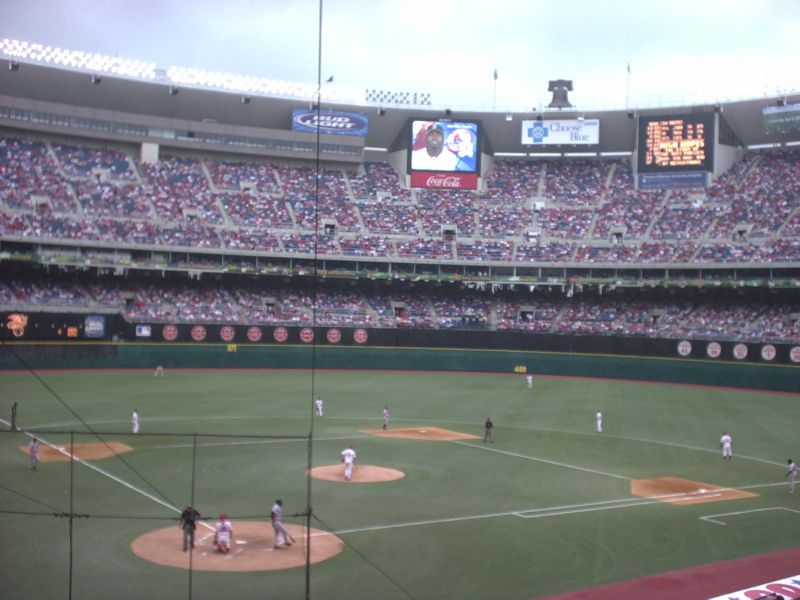
Philadelphia is a great baseball town and the fans deserve a new park, but I think the Vet represents an important part of baseball history, even one that is not looked upon favorably. Richie Hebner said "I stand at the plate in the Vet in Philadelphia, and I don't honestly whether I'm in Pittsburgh, Cincinnati, St. Louis, or Philly. They all look alike." Hebner was describing the then new octorad, which is the architectural term for a rectangle with rounded edges, stadiums that were homes for both football and baseball. After 2003 the only one of these left in baseball will be St. Louis' Busch Stadium II, for which there are plans to replace. I know most people aren't going to shed a tear when the last of these parks are leveled, but it will represent the end of an era.
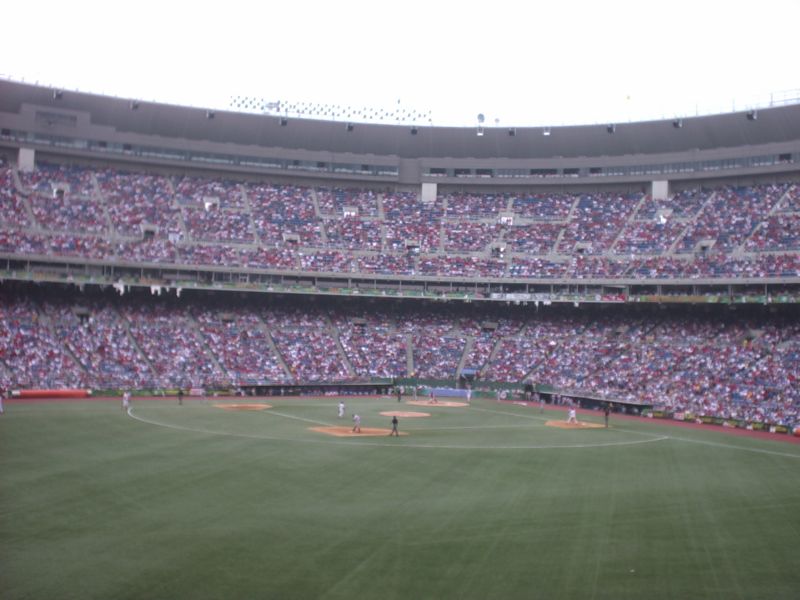
In 1964, voters approved a $25 million bond for a new multi-purpose stadium for the Phillies and the Eagles. Due to cost overruns, another bond issue of $13 million was voted in 1967. The total cost was about $52 million, the most expensive stadium built to date at that time.
Home plate from Connie Mack Stadium was transported to the Vet. The pitcher who would win the first game, Phillie's Jim Bunning, dropped the first pitch from a helicopter to catcher Mike Ryan. The right field wall was not finished in time for opening day, so a tarp covered the hole that was there. Outside the stadium are statues of a sliding baseball player and Connie Mack.
Phillies retired numbers are (in numerical order and the years they were retired):
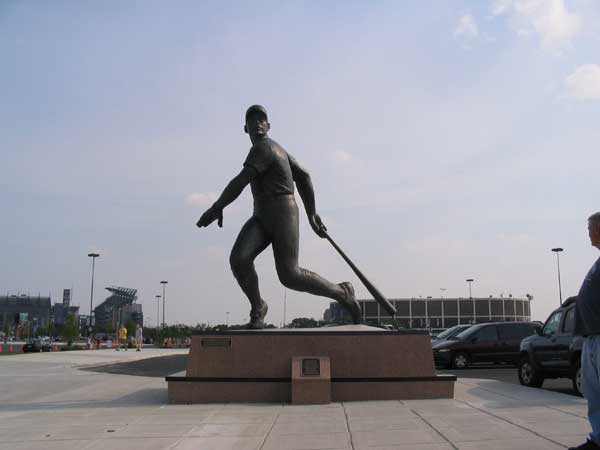
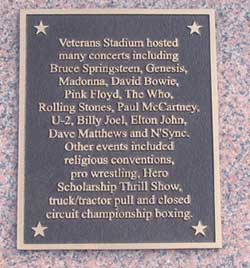 |
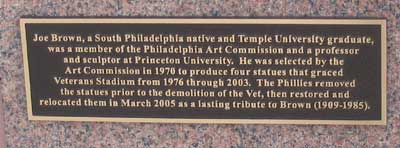 |

The above pictures are all of the site where Veterans Stadium once stood.
© 2003-17 Paul Healey.